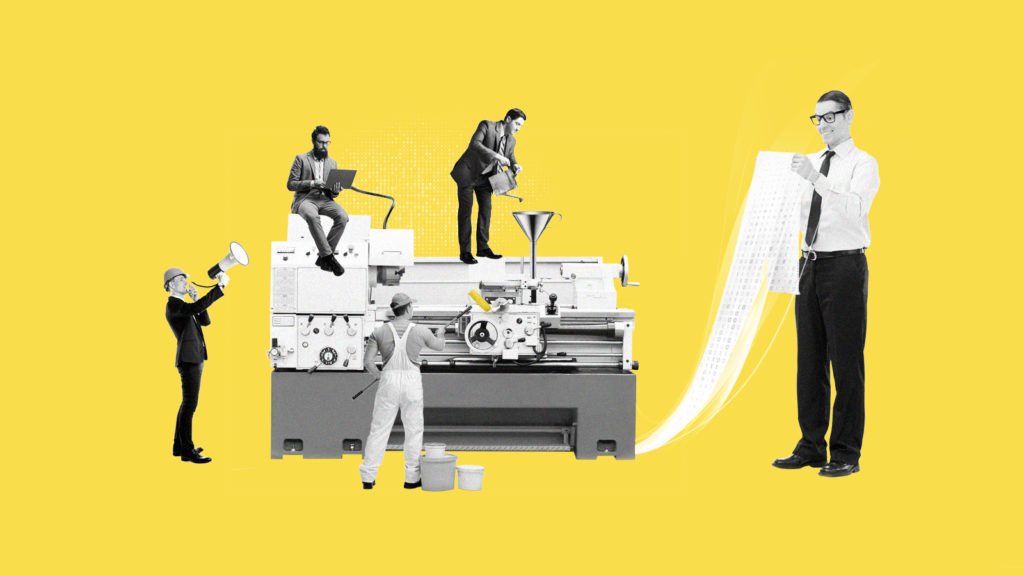It is therefore no longer a question of how production can be set up in the best possible technological way for the future – there are numerous solutions that provide an answer to this question.
Rather, the focus is now shifting to how work in digital production can and should look. After all, the full potential of the Smart Factory can only be realised if employees are able to work with existing resources with maximum efficiency.
Connected to the future
The term “Connected Worker” has long been established in the course of this discussion. According to Gartner, the vision behind this term is a production worker who can use various digital tools and data in his daily work. Technology enables the Connected Worker to interact with physical and virtual environments in an efficient and integrated way.
This clearly shows that the concept of the Connected Worker is not only about the interaction between man and machine.
Who is the Connected Worker?
Increasing automation has further intensified concerns about skills shortages. Jobs in production are not disappearing, they are changing, and the importance of a qualified employee is increasing.
However, anyone who thinks that the Connected Worker is just the production worker who stands directly at the machine and interacts with it is wrong. The Connected Worker does not describe a specific role, but rather a way of working in the future.
This can be anything from specific production tasks on the assembly line to management activities at headquarters. The big goal is to break down function-specific silos and achieve a level of efficiency where knowledge and skills can be combined on a higher level.
To achieve this, one thing above all is needed: a strategy for the production of the future that puts the employee at the centre.
The road to make the Connected Worker a reality
A complete implementation of the concept does not happen overnight. But the first step is more obvious than you might think. In many companies, for example, workstream collaboration tools are already in use, which are relevant for the Connected Worker, as they “connect” employees with each other.
The most important thing is to keep the long-term goal in mind. In the meantime, there are numerous solutions on the market which realise partial aspects of the Connected Worker. Without a clear strategy of how these individual solutions will eventually interlock and complement each other, the process will eventually come to a standstill.
Properly implemented, the Connected Worker enables continuity across all work processes, improving knowledge management, flexibility, work speed and production accuracy – and thus making production truly maximum efficient.
You are interested in the concept of the Conntected Worker and would like to learn more about the possible business benefits and the wide range of possibilities for realisation? Here you can find answers to these questions!
